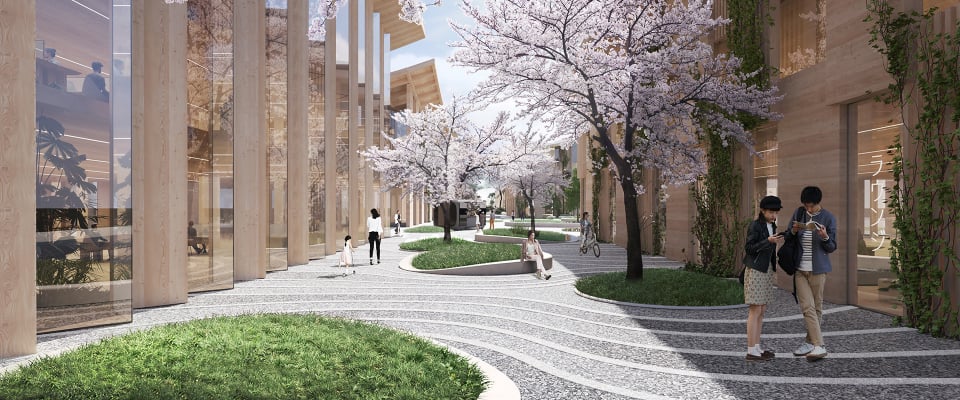Select your preferred store for a more customised experience.
City of the Future
What is Toyota’s Woven City?
There’s a new metropolis being built at the foot of Mt Fuji that’s unlike any construction the world’s ever seen. It’s called “Woven City” and it’s entirely owned and run by Toyota as a prototype for testing new technology and mobility in a real-world environment.
Built on a 175ha site in Susano, Japan, Woven City is the embodiment of Toyota’s goal to expand humanity, advance mobility and engage society. Just think of what it could mean to create an entire community from the ground up.
Who lives in Woven City, Japan?
Before long, real people will be living in Woven City. And not just Toyota’s management staff. The project is already under construction and may be ready for its first residents by 2023. It won’t be long before the city will become home for Toyota employees and their families, retirees, retailers, visiting scientists, industry partners and the general public. At first, the city will house 2000 people. After that the population will be allowed to grow naturally, over time. Toyota will work with Woven City residents to make new and better services based on shared values. Later, these services are expected to expand from Susano to benefit the rest of the world.

Three pillars for a city of the future
Designed by Danish architect, Bjarke Ingels, responsible for Google’s headquarters and the Two World Trade Centre, Woven city is based on three core concepts. It will be human-centred. A living laboratory. And ever-evolving.
The plan is to build a fully sustainable city. Buildings will be made mostly of wood to minimise its carbon footprint. Traditional Japanese wood joinery will be built using robotic production methods. Systems will be powered by hydrogen fuel cells, supplemented by solar panels.
Streets will be split into three separate forms of mobility: fast transportation of autonomous, zero-emission vehicles; an urban promenade shared by pedestrians and slower personal mobility vehicles; and a linear park with paths made just for foot traffic. The streets will weave together into a grid of 3x3 city blocks – each framing a local park or courtyard to bring people together for social gatherings and recreation.
In an age when technology, social media and online retail are replacing traditional meeting places, Woven City will look at new ways to encourage human interaction in urban spaces.
Homes will be equipped with the latest in human support tech, like in-home robotics to help with daily living and domestic chores. Autonomous couriers will run under dwellings and insert packages into a system that delivers them directly into the home. Sensor-based AI devices will keep tabs on occupants’ health, take care of basic needs and enhance everyday living.
Toyota’s president, Akio Toyoda believes this is a project that can benefit everyone. “Toyota began as a loom manufacturer, and by weaving fabric. Now it is our hope to use our technology to weave together a new kind of city, and a new way of enjoying life. As a company committed to mobility for all and as global citizens, I believe it’s up to all of us – especially corporations like Toyota – to do our part to help make the world a better place.”